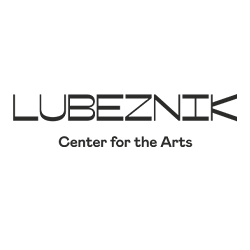 "Mapping and Borders In Art" Review, By Herbert George
"Mapping and Borders In Art" Review, By Herbert George
The latest exhibition at The Lubeznik Center For The Arts in Michigan City is entitled: Seeking Location: Mapping and Borders in Art. The exhibition is curated by Suzanne Cohen Lange and Jane Cooperman. At this moment in time the title is both prophetic and challenging. We crave order and certainty, but seldom have so many long held assumptions about gender, religion, race, and nationhood been questioned. Ours is not only a period of global turmoil, but it is also a search for a new order beyond the present chaos. These artists question why it is that once we establish our place in the world we construct borders that become fences, then walls. An aspect of mapping, as the title suggests, is to "Seek Location." But there is an established finality to the word "border" that contradicts the possibility of searching for and discovering other kinds of social relationships. The reasons for establishing borders are many, but they are often more about fear than necessity.
Of far greater importance than these questions about curatorial assumptions is the show itself. The careful placement of the works and the lighting of each by the curators invited me into the main exhibition space. Looking right a large levitating cutout confronted me. It looked very much like a textbook map of the United States. The work is entitled Tornado Alley and it's by Victoria Fuller. Because the map is positioned within the volume of an alcove the projected shadows become important extensions of her construction. Various colored flat planes are positioned primarily within the Midwest and South and at times these obscure certain borders between states. They look as though they might be weather fronts, but to this viewer I am uncertain as to their reasons for being.
In a work by Hector Duarte entitled Unraveled Borders, the artist divides the canvas into two parts using the image of a translucent vertical fence or border that extends from top to bottom, and vanishes in one point perspective at the distant horizon. On one side is the land of butterflies and what looks to be money floating in the air, all lit by the rising sun. On the other side-only desolation.
The exhibition extends to the second floor gallery and one of the questions I have often asked myself throughout the show came clearly to the fore here. Why are borders most often expressed in terms of line? In my experience crossing national borders I have often been struck by their sameness. Except for the check-point, its only after hours of driving that I experience any real differences between this new country, and the one I left behind. And it is often these nuanced/emotional differences rather than borders as "lines in the sand" that are the most meaningful.
A work that begins to confront these emotional divisions, versus a linear divide, is a drawing by Mel Watkin entitled Red Sea. Here the Red Sea, and its tributaries have been turned into blood red death that overflows its banks. The surrounding land is all but consumed by the hemorrhaging. A natural border-a red sea-rather than a line, separates two nations, and so it becomes a cautionary metaphor for the violence of war.
This ambitious exhibition brings together the work of twelve artists who, each in their own way, seek to rationalize what divides people, and by so doing attempt to show us a way beyond our present xenophobia.
Herbert George is a sculptor and retired teacher. As a sculptor, his work has received support and recognition from the New York State Council on the Arts and the John Simon Guggenheim Fellowship. In the 1970s he founded TRACKS: A Journal of Artists' Writings and taught the history of sculpture at Cooper Union in New York. In 1985, he moved to the University of Chicago where he taught undergraduate and graduate sculpture. He retired from teaching in 2006, and was awarded a Getty Museum Fellowship in 2007.
The Lubeznik Center for the Arts (LCA) is Northwest Indiana's premiere multidisciplinary contemporary art space conveniently located on the beautiful lakefront of Michigan City, Indiana, just a one-hour drive from Chicago. LCA's mission is to creatively interweave art exhibitions, the performing arts, educational programming and collaborative community outreach in order to enrich the arts experience within the region. The center has five gallery spaces that change quarterly which showcase regional and national artists. The third weekend in August LCA hosts its annual Lubeznik Art & Artisan Festival fundraiser which features artists from across the nation, music and food trucks. Additionally, on the first Friday of each month, LCA participates in Michigan City's popular/dynamic Uptown Arts District First Friday art walk from 5-8 PM (central time).
Lubeznik Center for the Arts is located at 101 W. 2nd St., at the lakefront in Michigan City, IN. Weekday hours are from 10AM to 5PM (CST)*. Weekends are open from 11AM to 4PM (CST). *Thursdays, the Hyndman Gallery opens at 2PM. For more information, please visit lubeznikcenter.org or call 219.874.4900.

